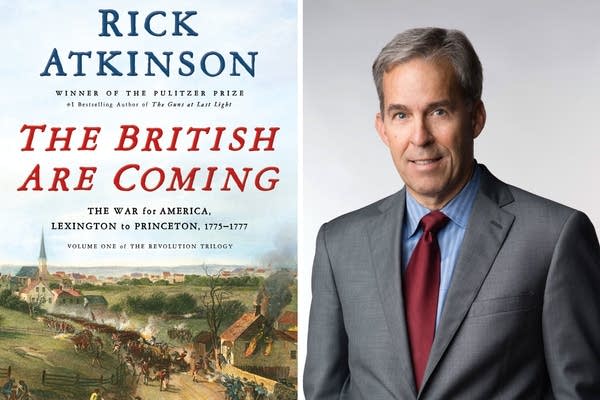Even after King George III received a copy of the Declaration of Independence, which reads like a criminal indictment of his conduct towards the North American colonies, he remained convinced that the rebellion across the broad Atlantic was the handiwork of a few malcontents and that his people loved him and would return to the fold.
Such miscalculation against all evidence is but one of the themes that arc across the centuries to offer lessons for today in “The British Are Coming: The War for America from Lexington to Princeton, 1775-1777. ” (Holt, $40). It is the first installment in a trilogy about the Revolution by Rick Atkinson, who won the Pulitzer Prize six years ago for “An Army at Dawn: The War in North Africa, 19452-1943,” part of his “Liberation Trilogy” about World War II.
For casual students of the Revolution, informed primarily by the American perspective, “The British Are Coming” will be particularly enlightening because it examines the British perspective and, in another one of those arcs across the centuries to today, reveals the limits faced by the world’s foremost military power.
Benjamin Franklin, who represented Pennsylvania and other colonies in London for a decade before hostilities began, was well aware of England’s shortfalls despite its power. He reminded many government ministers that the colonial population was on a course to double every 25 years while England’s was stagnant,and that the Empire faced a demographic battle it could not win. Accommodation, he counseled, was England’s smart play.
Atkinson’s gift for illuminating detail also reveals King George’s plight. The entire British Army consisted of only 50,000 troops at the outbreak of the war, of whom only 36,000 were fit for duty. Thousands of those had to be posted in pesky Ireland, where rebellion was stanched primarily by proximity. British military professionals pointed out that they never could control all of the North American colonies, pointing out to His Majesty that Boston was as far from Charleston as London was from Venice. And, they told him, a country in revolt would not feed his army and horses, thus mandating a 3,000-mile supply line and limiting military operations to within a few miles of ports.
In his description of some of the major early battles, Atkinson deftly describes how both sides were on the razor’s edge. The British Army nearly was annihilated on its ill-planned return march to Boston from Lexington and Concord, and it could not have survived a repeat of its pyrrhic “victory” at Bunker Hill.
George Washington’s army also was on the brink of destruction at Christmas 1776, having been driven out of New York, across New Jersey and into Pennsylvania by a powerful army led by Gen. William Howe and Lord Cornwallis. Washington, whom Atkinson describes as being prone to poor generalship early in the war regarding the use of terrain, saved his army and the rebellion with his brilliant strike against highly professional, battle-hardened Hessian mercenaries at Trenton and Princeton (who, by the way, were not drunk – contrary to myth – and actually were on high alert due to guerilla attacks the previous day by militia not connected to Washington’s force.)
Atkinson presents a panoply of heroes and scoundrels on both sides, including one man who was both — Benedict Arnold, whose courage and generalship prevented the British from dividing the colonies along the Hudson before he betrayed the cause. We meet an array of incompetent British colonial governors, led by the hapless John Murray, Lord Dunmore, royal governor of Virginia, who believed he would slake the rebels’ thirst for their own freedom by threatening to free their slaves. But he was no abolitionist. The threat applied only to rebels; loyal slaveholders would remain so. As a result, he had to flee for his life and spent the early part of the war aboard a British warship for his own protection. Atkinson also illuminates conflict within the British high command, dividing those who sought to win the hearts and minds of the disaffected colonials and those who sought to punish them for their insolence.
This is a history told by the great figures — Washington, Howe and others — but also by the common soldiers of both sides who endured extraordinary hardships. It is entertaining, informative and, especially regarding the sacrifices made by those early Americans, inspirational.
“The British Are Coming: The War for America from Lexington to Princeton, 1775-1777”
- Author: Rick Atkinson
- Pages: 800
- Publisher: Henry Holt and Co.
- Price: $40

Patrick McKenna has been associate editor of The Times-Tribune since July 1990. He is a member of the newspaper’s editorial board, a role in which he helps to formulate editorial policy. As editorial and op-ed editor, he is responsible for most of The Times-Tribune’s opinion content and the author of most of the newspaper’s editorials. A 1978 graduate of Penn State, Pat started at The Scranton Times in March 1978. He has won multiple statewide awards for editorial writing, and the national WIlliam Allen White Award for Editorial Excellence. Pat is a Scranton native and lives in Clarks Green.



